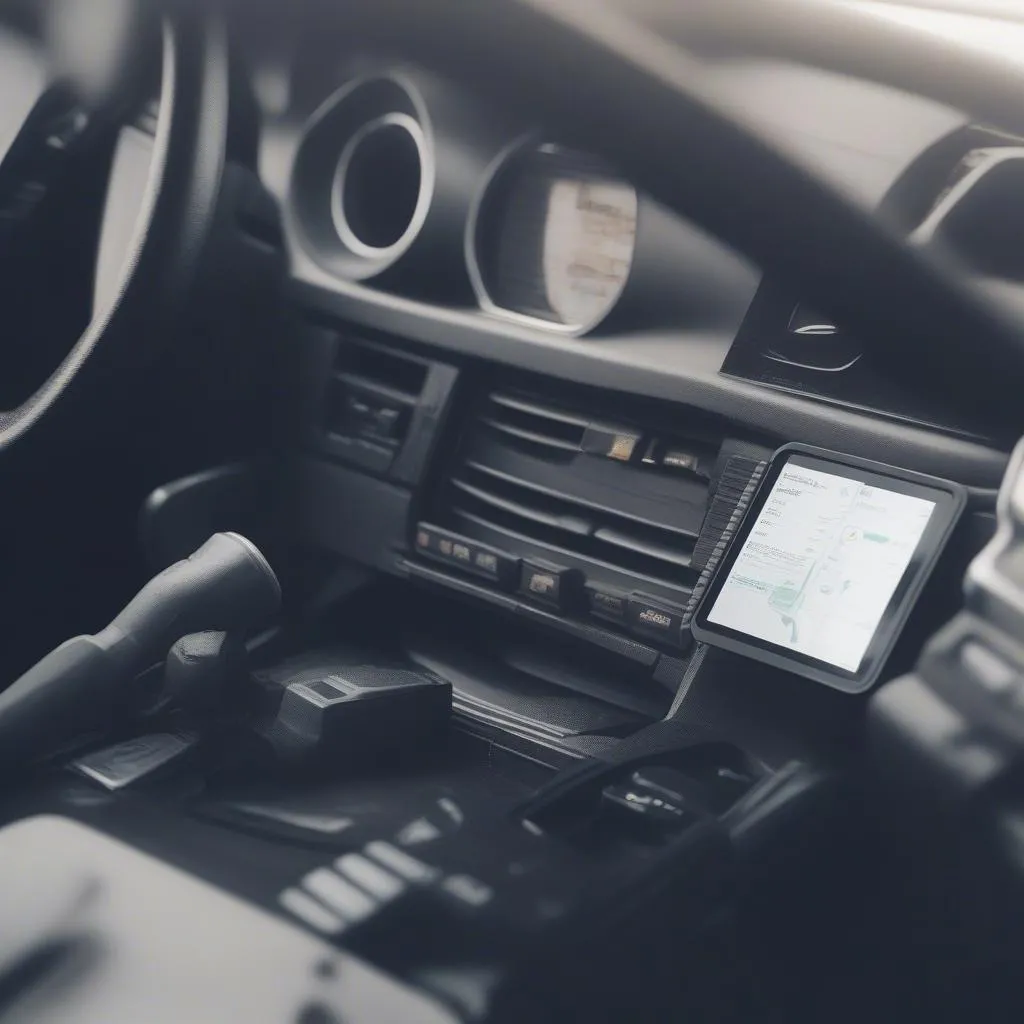Imagine this: You’re driving down the road, and your car suddenly starts sputtering. You pull over, check under the hood, but everything looks fine. What could be wrong? This is where an OBD tool comes in handy.
What is an OBD Tool?
An OBD tool, also known as an OBD scanner or code reader, is a diagnostic device that plugs into your car’s On-Board Diagnostic (OBD) port. It allows you to read and interpret diagnostic trouble codes (DTCs), which are error messages stored by your car’s computer.
Why Use an OBD Tool?
An OBD tool can be a valuable asset for any car owner, especially when it comes to understanding what’s wrong with your vehicle. Here are some benefits:
- Identify problems early: OBD tools can help you detect issues before they escalate into more serious problems, saving you money on costly repairs.
- Diagnose engine issues: They can pinpoint the source of engine problems, such as a malfunctioning sensor, a faulty spark plug, or a clogged fuel injector.
- Clear trouble codes: Once you’ve identified the problem, you can use an OBD tool to clear the DTCs and reset your car’s computer.
- Monitor vehicle performance: Some OBD tools can track your car’s performance data, such as fuel consumption, engine temperature, and speed, giving you valuable insights into your vehicle’s health.
How to Use an OBD Tool: A Step-by-Step Guide
Using an OBD tool is simple, and most models come with user-friendly instructions. Here’s a general guide:
- Locate the OBD port: The OBD port is typically located under the dashboard, near the steering column.
- Connect the OBD tool: Plug the OBD tool into the OBD port.
- Turn the ignition on: Turn the ignition key to the “ON” position without starting the engine.
- Read the codes: The OBD tool will automatically scan your car’s computer and display the DTCs.
- Interpret the codes: Use the OBD tool’s manual or an online database to decipher the meaning of the codes.
- Clear the codes: Once you’ve fixed the problem, you can clear the DTCs using the OBD tool.
What to Do After Reading Codes
After you’ve read the codes and understand what they mean, it’s important to take the appropriate action.
- Consult a mechanic: If you’re not confident in your ability to diagnose and repair the issue, it’s best to consult a qualified mechanic. They can help you interpret the codes, diagnose the problem, and make the necessary repairs.
- Perform simple repairs: For some common issues, such as a loose gas cap, you may be able to fix the problem yourself.
- Monitor the codes: If the code returns, it indicates that the problem hasn’t been completely resolved, and you’ll need to investigate further.
Common Questions About OBD Tools
Q: What types of OBD tools are available?
A: OBD tools come in various forms, ranging from basic code readers to advanced diagnostic scanners. Choose a tool that meets your needs and budget.
Q: Are all OBD tools compatible with all cars?
A: Most OBD tools are compatible with vehicles manufactured after 1996, when OBDII became a standard in the US. However, some older vehicles may require an adapter.
Q: Can I use an OBD tool to reset my car’s “Check Engine” light?
A: Yes, you can use an OBD tool to clear the DTCs, which will turn off the “Check Engine” light. However, remember that this only addresses the symptom, not the underlying issue.
Q: Can I use an OBD tool to diagnose my car’s air conditioning system?
A: No, OBD tools are primarily designed for engine diagnostics. To diagnose your car’s AC system, you’ll need a specialized AC diagnostic tool.
Using OBD Tools for Specific Car Makes and Models
OBD tools can be used on a wide range of cars, including:
- European Cars: Like Audi, BMW, Mercedes-Benz, Volkswagen, and Volvo.
- American Cars: Like Ford, Chevrolet, Dodge, and Jeep.
- Asian Cars: Like Toyota, Honda, Nissan, Hyundai, and Kia.
For specific instructions and compatibility information, consult your car’s owner’s manual or the OBD tool’s documentation.
 How to Connect an OBD Tool to Your Car
How to Connect an OBD Tool to Your Car
Conclusion
Using an OBD tool can be a valuable tool for understanding your car’s health and identifying potential problems. By following these steps and consulting your car’s manual or the OBD tool’s documentation, you can get the most out of this handy diagnostic device.
If you have any further questions about OBD tools or need help using them, feel free to contact us. Our team of experts is available 24/7 to assist you with your automotive needs. Contact us via WhatsApp: +84767531508.